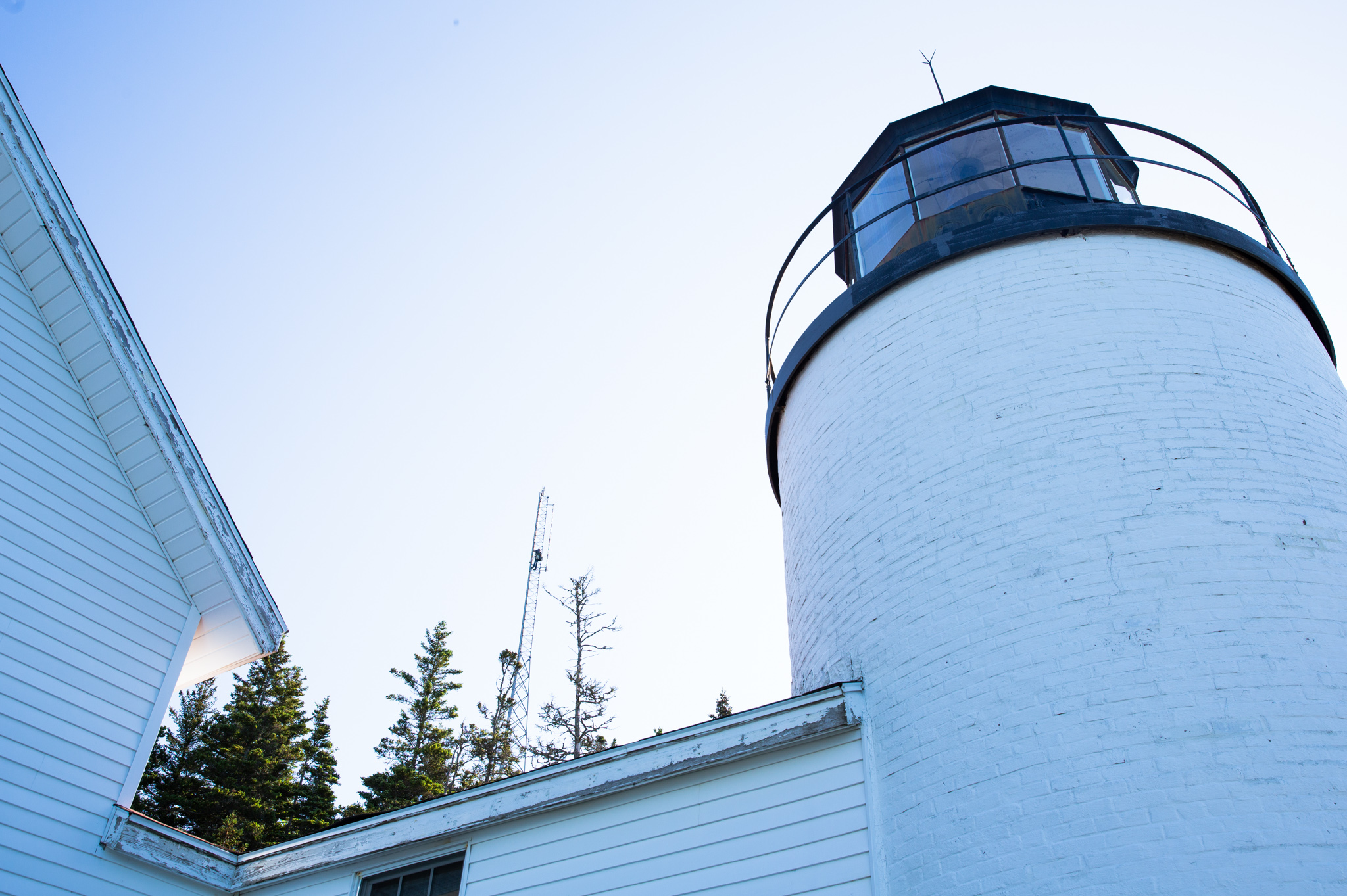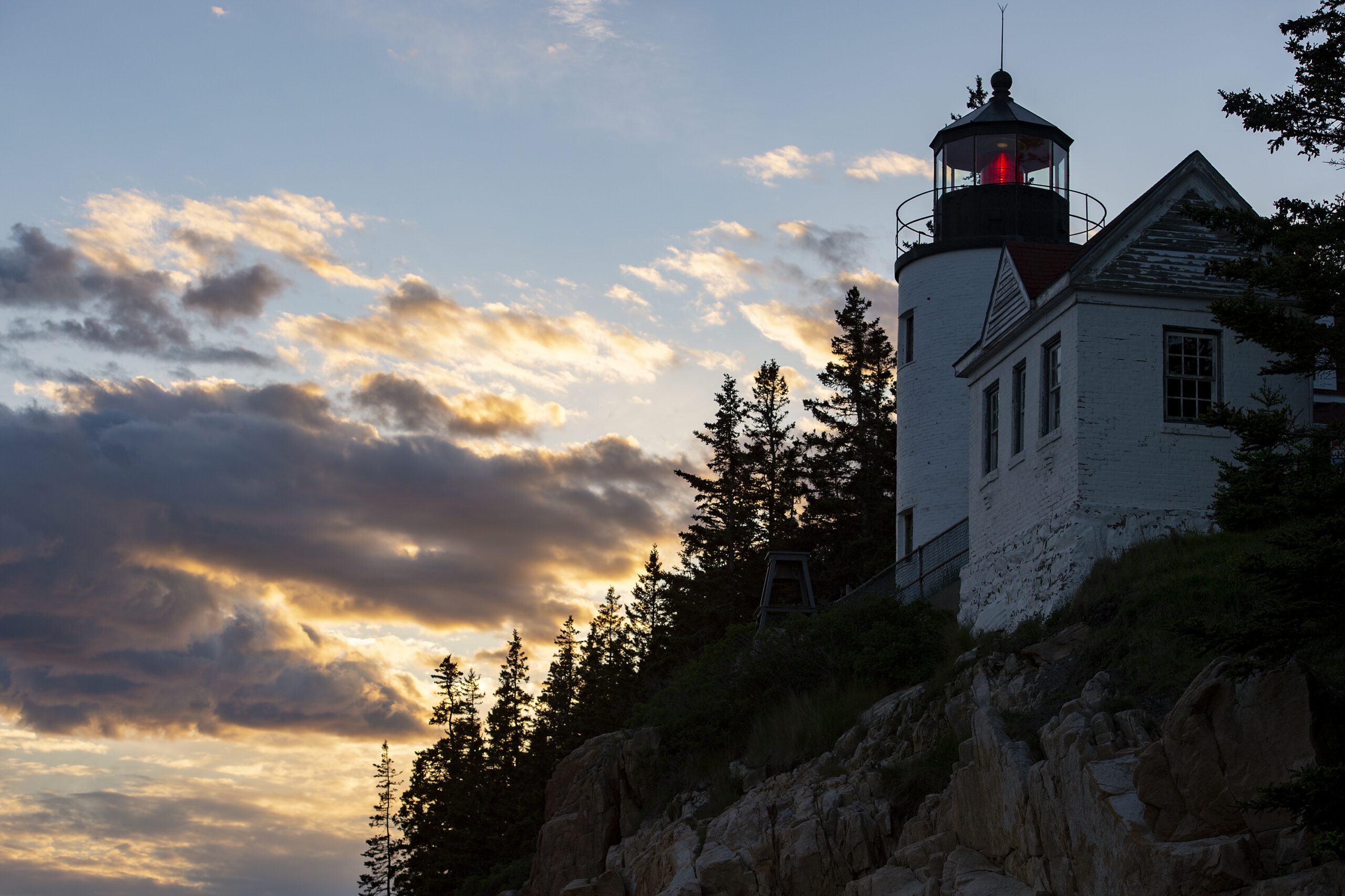The Fifth Most Visited Site Of The Park Officially Becomes NPS Property
October 15th, 2021
October 15th, 2021
BY EARL BRECHLIN
By the time you read this, one of Acadia National Park’s most visited places will officially be part of the park.
While Acadia owns more than 50 acres immediately surrounding the Bass Harbor Head Lighthouse, the actual tower and keeper’s house, along with other buildings and approximately two acres of land around them, have always belonged to the U.S. Coast Guard.

Crew members work to dismantle a radio tower at the Bass Harbor Head Light (Photo by Will Newton/Friends of Acadia)
Nearly two and a half years ago, the Coast Guard announced it planned to relinquish the facility to the National Park Service. The final paperwork was signed in early July. “We now have control of the property the public always thought we had control of,” says Acadia’s Management Assistant John Kelly.
The lighthouse, first constructed in 1876, has appeared on the official Acadia National Park postage stamp, the Maine State Quarter, and on the cover of the Rand McNally Road Atlas of the United States. It gained even greater notoriety when President Barack Obama and his family visited in 2010.
According to Kelly, the lighthouse is the fifth-most visited location in the park, trailing only Cadillac Mountain, Jordan Pond House, Sand Beach, and Thunder Hole. In 2019 an estimated 180,000 people visited the site. “It has to be among the most photographed locations in Acadia,” he says.

(Photo Emily Moses /Friends of Acadia)
Several processes had to be followed before the transfer could take place. Environmental assessments had to be made. The Coast Guard had to determine how to continue to power the lighthouse’s distinctive red beacon once it no longer had control of the property. Because it had frequently been used as housing for Coast Guard personnel, the building and tower itself have never been open to the public.
In June, an obsolete metal radio tower at the lighthouse was dismantled (visit Friends of Acadia’s Vimeo page for a time-lapse video of the removal) and Coast Guard crews replaced the distinctive red beacon. Previously, it was a clear lamp surrounded by large red plastic panels. The new lamp, an energy-efficient LED, will itself be red allowing for the removal of the panels.
Park officials are planning some environmental remediation and are exploring exactly how to manage it and how much access to allow. More than $300,000 contributed during a Friends of Acadia Annual Benefit paddle raise has helped pay for that work.
“Our goals are to preserve the lighthouse first and foremost and to increase the understanding of its historical and cultural significance,” Kelly says. He continues that officials have already launched a process that will involve park managers, Tremont town officials, and the local historical society.

The sun sets behind the Bass Harbor Head Light near Acadia National Park, (Photo by Will Newton/Friends of Acadia)
No decision has been made yet on whether it will be possible to make the top of the tower accessible to visitors, who would have to ascend a narrow spiral staircase and squeeze through a small metal hatch. “Accessibility would be a major challenge,” Kelly says.
With the completion of the paperwork involving the park, Coast Guard, and the General Services Administration, an entire realm of possibilities opens, Kelly continues. Property west of the lighthouse will become part of the park and could provide new and different views of the beacon. Officials are also exploring ways to mitigate the parking and traffic congestion along the access road, which can become jammed with cars during peak visitation hours, particularly at sunset.
“There are a lot of ideas on the table,” he says
EARL BRECHLIN is Friends of Acadia’s Communications Director.